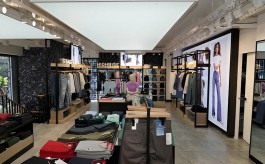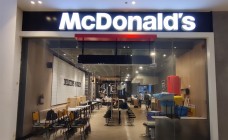Fashion retailers’ revenues expected to fall by 8% in FY2022, says ICRA
By Retail4Growth Bureau | January 20, 2022
According to ICRA Ratings estimates, fashion retailers are expected to reclaim upto 72% of their pre-pandemic revenues in FY2022 as against upto 80% expected earlier and also a strong bounce-back is expected post the third wave with a healthy balance sheets to support the credit profiles of large, listed retailers
 ICRA Ratings estimates that renewed restrictions on operating hours of malls/non-essential stores and curtailment of mobility amid the third Covid wave, will shave off ~8% of fashion retailer’s revenues in FY2022. Consequently, these retailers are expected to reclaim upto 70-72% of their pre-pandemic revenues in FY2022 as against 78-80% expected earlier. This is based on estimated 20% decline in store-operating hours during the fourth quarter vis-à-vis rating agency’s earlier expectation[1], leading to a commensurate decline in Q4 revenues.
ICRA Ratings estimates that renewed restrictions on operating hours of malls/non-essential stores and curtailment of mobility amid the third Covid wave, will shave off ~8% of fashion retailer’s revenues in FY2022. Consequently, these retailers are expected to reclaim upto 70-72% of their pre-pandemic revenues in FY2022 as against 78-80% expected earlier. This is based on estimated 20% decline in store-operating hours during the fourth quarter vis-à-vis rating agency’s earlier expectation[1], leading to a commensurate decline in Q4 revenues.
The restrictions are expected to be limited to Q4 FY2022 and estimated to be around six to eight weeks. Strong rebound in sales is, however, expected upon lifting of restrictions, akin to that witnessed post the second wave. ICRA currently has a negative outlook on the segment and expects it to revert to its pre-Covid level of sales by Q2 FY2023, assuming the absence of any fresh wave of infections.
 On the cost structure front, retail entities typically have three key cost components– rental, employee cost and selling/promotional expenses which account for ~29-30% of their total costs, over and above the material costs. Giving more insights on the segment, Sakshi Suneja, Assistant Vice President and Sector Head, ICRA says, “Typically,January and February are the months of the end-of-season sales (EOSS), where retailers attempt to liquidate their (winter stock) inventory, prior to the launch of fresh Spring Summer collections. With restrictions on mobility, retailers face a great risk of inventory markdowns as they are expected to resort to higher levels of discounting to attract customers. While this, coupled with increased input costs (cotton yarn and manmade fibres), would impact their gross margins, rental negotiations and rationalisation of other discretionary spends are expected to somewhat limit the decline in operating profit margins (OPM). Inability to clear out excess stock could result in higher borrowings or depletion in cash balances for some retailers in Q4 FY2022.”
On the cost structure front, retail entities typically have three key cost components– rental, employee cost and selling/promotional expenses which account for ~29-30% of their total costs, over and above the material costs. Giving more insights on the segment, Sakshi Suneja, Assistant Vice President and Sector Head, ICRA says, “Typically,January and February are the months of the end-of-season sales (EOSS), where retailers attempt to liquidate their (winter stock) inventory, prior to the launch of fresh Spring Summer collections. With restrictions on mobility, retailers face a great risk of inventory markdowns as they are expected to resort to higher levels of discounting to attract customers. While this, coupled with increased input costs (cotton yarn and manmade fibres), would impact their gross margins, rental negotiations and rationalisation of other discretionary spends are expected to somewhat limit the decline in operating profit margins (OPM). Inability to clear out excess stock could result in higher borrowings or depletion in cash balances for some retailers in Q4 FY2022.”
The decline in revenues and profits is expected to be more pronounced for mall-based retailers, particularly those located in Metros and Tier-1 cities where the incidence of infections is higher. As seen during the first two waves, malls are among the last segments to witness easing of restrictions. Even after re-opening, the ramp-up in mall footfalls has been only gradual.
Entities with omni-channel (offline as well as online) presence are, however, better placed to tide over the third wave amid the restrictions on offline sales. The pandemic accelerated adoption of online retailing in India, with most of the retailers reporting more than 50% jump on a Y-o-Y basis, albeit on a low base, in online sales in FY2021. The share of online sales (within the total revenues) will likely rise to ~7-8% in FY2022 vis-à-vis ~3-4% during pre-Covid levels.
Fashion retail staged a strong recovery during Q3 FY2022 and reached its near pre-Covid level of sales during the festive season. Part of the recovery could, however, be attributed to the pent-up demand and is estimated to have softened (sequentially) in the month of December 2021. Led by improved revenues, fashion retailers are estimated to have reported OPM of 18% in Q3 FY2022 (similar to that seen in Q3 FY2021), despite no major rental concessions received this time around.
Elaborating further, Suneja says, “While the third wave will dent profitability in Q4 FY2022, the credit profile of large, listed entities[2] is expected to remain adequately supported by strong balance sheets, as evinced by healthy liquidity (~Rs. 2,500 crore of cash and liquid investment balances vis-a-vis total debt of Rs. 2,100 crore as on September 30, 2021) and improved cash flows in Q3 FY2022. Going forward, further spread and severity of the pandemic, extent of rental negotiations and pace of recovery in demand will be key monitorables.”
ICRA expects the food and grocery (F&G) retailers to be less impacted during the third wave (vis-à-vis earlier waves), given the current localised and less severe nature of restrictions on store operating hours and on sale of general merchandise. Given the essential nature of operations, despite reduced footfalls, higher transaction size shall adequately support the revenues and profitability of these retailers. Any extension in restrictions on store operating hours or lockdowns which restrict the sale of non-food items will, however, pose a downside risk to such retailers’ financial performance in the near term.
[2] Includes retailers like Aditya Birla Fashion and Retail Limited, Shoppers Stop Limited, Trent Limited, V Mart Limited, V2 Retail Limited, Bata India Limited, Relaxo Footwears Limited and Liberty Shoes Limited




_140_270.jpg)



